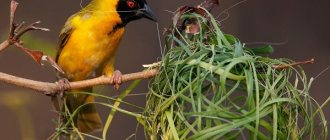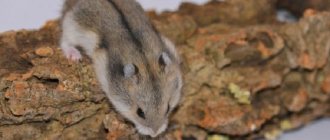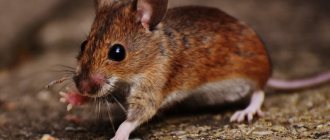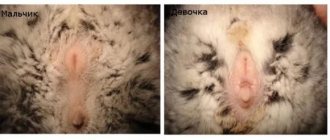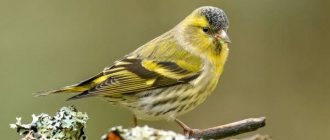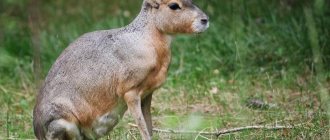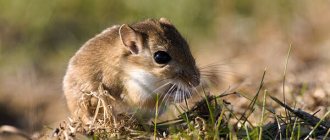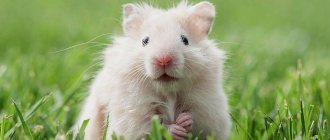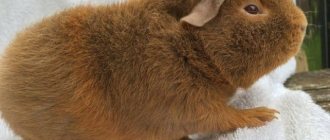- How long does a lynx live?
It just so happens that some of the most formidable predators on our planet are representatives of the cat family, and every kind and affectionate cat has very formidable relatives. One of them is the lynx, which, in fact, is large, wild and, of course, very predatory
a cat that lives in the forests. Our article today is about her.
Description, structure, characteristics
The average body length of a lynx is from 80 to 130 cm. The weight of a lynx, if it is a male, is from 18 to 25 kg, females are slightly smaller and correspondingly lighter, their weight is usually 17-18 kg. The body of this animal is short and dense.
It has, like all cats, a tail, although it is a lynx tail, usually with a chopped off end. The lynx's ears are decorated with fluffy tassels. Also, these “cats” have elongating hair on the beard, creating a kind of sideburn. The lynx's muzzle is round and small, but its eyes are larger, and with vertical pupils. Her vision is very good, besides, the lynx is able to see in the dark, the same can be said about hearing and smell, all these senses in lynxes are as well developed as in ordinary cats.
The lynx's fur is thick, silky and beautiful. Large and fluffy paws provide an excellent opportunity for the animal to move through the snow in winter. The color of the lynx varies depending on its species and habitat, from red to gray-brown.
Why does the lynx have a short tail?
All representatives of felines use the tail for maneuvering and quickly changing the direction of running while pursuing prey. The lynx spends most of its time in the trees and prefers to hunt from ambush, so the tail does not play such an important role for it. On the contrary, a long tail would prevent the animal from quickly moving along branches and hiding in hollows. This is most likely why the lynx is the cat with the shortest tail.
SNOW LEOPARD
Habitats
The lynx lives over a very wide geographical range, but exclusively in the northern hemisphere of our planet: in North America (in the USA and Canada), in the north of Eurasia: these cats can be found in the Siberian taiga, and in the mountains of China and Tibet, and in the Scandinavian peninsula. As for our country Ukraine, the common lynx is found, among other things, in the Carpathian forests.
The lynx always chooses dense forest areas as its habitat. It happens that in search of prey, lynxes can go to forest edges or meadows, but they do not stay there for long, always returning to their native forest thickets.
Features of color
The coat of these animals depends on their habitat and is represented by many options, including different colors. Therefore, there are species with a reddish-brown color, as well as types of pale-smoky tones, as well as their variants. In this case, a pattern may appear on the body in the form of spots on the back and paws, including on the sides of the predator.
The lynx's belly is covered with long and fairly soft hair, but not thick, distinguished by a white tint, with barely noticeable specks. Lynxes living in the southern regions are characterized by a red coloration, while they have relatively short and dense hair. Lynxes shed twice a year, both in spring and autumn.
Nutrition
It will probably be unnecessary to say that the lynx is an incorrigible predator (like all cats), so its diet consists of various forest animals, most often hares. The lynx also hunts various small rodents, roe deer,
deer (but young ones; an adult deer, which also has powerful antlers, is not always easy to cope with), black grouse birds. Sometimes partridges, raccoons, hazel grouse and even foxes become its prey.
What does it eat?
The diet largely depends on the variety. Small lynxes eat rodents, birds, and hares. Larger common lynxes attack wild boars, young moose, roe deer and deer.
Every day the animal needs to eat up to 2 kg of meat. The lynx covers the uneaten remains of carcasses with fallen leaves or snow. Very often, poorly hidden prey is found by other predators.
MANUL
Enemies in nature
As for the lynx itself, besides humans, its main enemy in natural conditions is
wolf. Or rather, wolves, who, when gathered in a pack, can easily tear a wild cat apart. Knowing this, lynxes try to avoid places where there are many wolves. As you can see, here in the battle between the collectivism of representatives of the canine family - wolves, and the individualism of representatives of the cat family - lynxes, collectivism wins, despite the fact that a single lynx is stronger than a single wolf; it cannot resist a well-coordinated wolf pack.
Where does it live?
Photo: Lynx cat
The lynx lives in rugged forests where there is a lot of prey. In sparse forests or bush thickets it is much less common. This cat is also found in mountains and cactus thickets. A lynx will never settle in open areas. In general, she tries to stay as far away as possible in the territories she inhabits.
The common lynx lives only in the Northern Hemisphere of the Earth. Its habitat extends almost throughout Scandinavia, Europe, to the east and north of Russia, and further to Central Asia.
Countries where the common lynx is found:
- Balkan Peninsula: Serbia, Macedonia, Albania;
- Germany;
- Carpathians: from the Czech Republic to Romania;
- Poland;
- Belarus;
- Ukraine;
- Russia;
- Scandinavia: Norway, Finland, Sweden;
- France;
- Switzerland;,
- Transcaucasia: Azerbaijan, Armenia, Georgia;
- Central Asia: China, Mongolia, Kazakhstan, Uzbekistan, Tajikistan, Kyrgyzstan;
- Baltics.
Among the entire family of cats, the common lynx is the most cold-resistant animal. It is found even beyond the Arctic Circle, in Scandinavia. Once upon a time this animal could be seen in any part of Europe. But by the middle of the 20th century it was almost completely exterminated in Central and Western Europe.
Today they are trying to restore the population of these cats, and very successfully. However, it is scarce everywhere. In Russia, 90% of lynxes live in Siberian coniferous forests, although they are found from the western borders of the country to Sakhalin itself.
Lifestyle
As we wrote just above, lynx prefers dense forests as habitats. Taiga is an ideal place for lynx. All lynxes can climb trees well and swim well. The spotted color of the lynx helps to camouflage it. These animals lead a solitary lifestyle, at most in pairs of male + female, in which they lose to their competitors, wolves.
In search of food, a lynx can walk up to 30 km a day. They go out hunting at dusk, lying in wait for potential prey in ambush, then making a sharp jerk - the speed of a lynx during a rapid rush can reach up to 40 km per hour. It is interesting that the lynx is not too afraid of people, and may well attack, including a person, but only if it is very persistent and careless, it usually prefers other loess game.
Hunting
The main daily activity of the lynx is hunting. Representatives of the species spend the bulk of the day searching for food. During the daytime, adults rest in a den or high on tree branches. The hunt begins at dusk.
There is an opinion that lynxes prefer to jump on victims from tree branches. However, this behavior is atypical for these animals. Typically, lynxes guard their prey from ambushes or try to get close to the game at a short distance from which they can make a lightning-fast throw. Once in the vicinity of a potential catch, the predator covers the remaining distance with several jumps. The lynx is capable of chasing prey at distances of up to 80 kilometers. Then the predator runs out of steam and stops.
Types, photos and names
There are several types of lynx, below we will describe them in more detail.
Common lynx
The most common representative of this species, everything that we wrote above, is primarily swayed by the common lynx.
Canada lynx
Some zoologists consider it a subspecies of the common lynx. As the name suggests, this lynx lives mainly in Canada, but it can also be found in a number of northern US states (Idaho, Montana). It also differs from the ordinary lynx in being half the size; its body length is 48-56 cm. The fur of the Canadian lynx is grayish-brown in color.
Iberian lynx
This type of lynx is found in the southwest of Spain, nowadays mainly only in the territory of the Coto Doñana National Park and is the rarest in nature. If the lynx as a whole species is included in
Red Book, since it is endangered, the Iberian lynx is currently not only one of the rarest mammals on planet Earth - according to zoologists, its population is currently only about 100 individuals, and Every effort must be made to preserve the Iberian lynx into the future.
In appearance, the Iberian lynx differs from the usual one in that it has a lighter coat color and the presence of pronounced spots, which gives it a resemblance to a leopard.
Red Lynx
Living in the United States, the red lynx is distinguished by its red-brown color, with gray shades, and the presence of a white mark on the inside of the tip of the tail (other lynxes have black). It is also smaller in size compared to the common lynx; the weight of the red lynx is 6-11 kg. And what is most interesting, among red lynxes there are sometimes melanists, that is, representatives with a completely black color, which, like representatives of melanistic jaguars and melanistic leopards, are called
Panthers
Interesting facts about lynx
- In ancient Greek mythology, there is a legend about the Scythian king Linkh, who wanted to deceive himself for the glory of being a teacher of agriculture. Demeter, having learned about this, turned Linkh into a spotted cat, and the dagger thrown by the goddess after the fleeing animal cut off part of its tail. This is how the lynx with its shortened tail appeared in the animal kingdom. The scientific name of the lynx Lynx is taken from the ancient Greek language and is consonant with the name of the Scythian king. Translated, it means “red”.
- For a long time, the caracal (steppe lynx), which lives on the African continent and East Asia, was classified as a genus of lynx. However, genetic analysis showed that this species has a number of differences, and therefore caracals were classified as a separate genus.
- Lynxes have excellent hearing and sharp eyesight. In ancient times, they were credited with supernatural abilities, including the ability to see through objects.
- With the onset of cold weather, the lower part of the lynx's paws becomes covered with fur. Thick fur allows the animal to move through the snow without falling through.
Reproduction
The mating season for lynxes, like their close relatives cats, begins in March. And it is also accompanied by loud purring and meowing (those who have domestic cats know what this is). It happens that several males begin to court one female at once, and she chooses the strongest and most worthy among them. As a sign of love, lynxes often lick each other's fur.
Lynx pregnancy lasts 65-75 days, usually 2-3 lynx cubs are born at a time. Again, like their closest feline relatives, they are born blind, their eyes appear only on the 12th day of life. At first, the mother lynx takes every possible care of the babies and feeds them. In general, with lynxes everything happens here very similar to domestic cats.
Dimensions
Adults grow in length from 80 to 130 cm, and the height at the withers reaches about 70 cm. An adult lynx, well-fed and well-formed, is similar in size and weight to a large dog. Vigorous, healthy males reach a weight of 18 to 25 kilograms, although some individuals gain weight in the range of 30 kilograms. Females are slightly smaller in size and weigh no more than 20 kg.
Video
And in conclusion, we invite you to watch an interesting documentary about the lynx from the National Geographic channel - “Lynx - the Elusive Hunter.”
Author: Pavel Chaika, editor-in-chief of Poznavaika magazine
When writing the article, I tried to make it as interesting, useful and high-quality as possible. I would be grateful for any feedback and constructive criticism in the form of comments on the article. You can also write your wish/question/suggestion to my email [email protected] or Facebook, with respect, the author.
Author page
Economic value for humans: Positive
The Eurasian lynx was close to extinction due to heavy hunting for its fur in the early 1900s. Currently, commercial hunting is illegal in all countries except Russia. Eurasian lynxes are carefully protected in Afghanistan, where all hunting and trading is illegal. However, illegal fur trades occur in some countries.
A. A. Cherkasov. "Notes of a Hunter of Eastern Siberia"
Fishing for lynx does not bring great benefits anywhere, since lynx are generally much less common than other animals, with the exception of otters and wolverines, although in the north they are much more numerous than in the south.
In general, we can say that the lynx is found in the Perm province wherever there are coniferous forests, that its number increases to the north almost to the tundra and that it prefers mountainous forests to lowland ones: rocky places and rocky river banks constitute its favorite refuge.
However, lynxes lead a sedentary lifestyle only at certain times of the year, namely in spring and summer, when they breed and feed the young; the rest of the time, and the males are constantly wandering wherever they can and often come several hundred miles away; Apparently, they also make fairly regular migrations, but these transitions depend not on the depth of the snow, which is not of particular importance for them, but on the migration of elk, deer and goats to the eastern slope of the Urals.
It is very remarkable that lynxes constantly walk in the same places and along the same mountain ridges.
Lynx are shot with dogs running them into trees, or caught with traps or snares on trails. The first hunt is the most common, and this is how most of them are caught. Usually an industrialist, having found a fresh lynx trail, sets a dog along it, which, seeing the animal, rushes headlong after him and chases him until he gets tired, which happens very quickly, since the lynx runs quickly, about two or three minutes. , then gets tired and usually climbs a tree, from where the dog does not let her down until the hunter arrives in time to hear his yelp, who shoots in the most lethal place, that is, in the head or chest, otherwise the lynx can easily tear the dog apart and go very far. For the success of this hunt, nimble, strong and dexterous dogs are needed that would be able to quickly drive a lynx, and if shot, would be able to dodge its terrible claws and teeth; a wounded lynx is dangerous even for a hunter. Wolf traps are used to catch lynxes on the trails, and sometimes in the summer near their holes: usually a lynx caught in a trap does not go far and soon freezes in the cold.
There are many hunters in Rus', but how many lucky ones have had the opportunity in their lifetime to not only kill lynxes, but even see them killed?.. This animal is quite rare not only in European Russia, but even here, in vast Siberia. Tell me, where should animals be at the present time, if not in mother Siberia, which is still so sparsely populated and offers the most favorable conditions for this? Although I am one of those lucky hunters who happened to kill lynxes, I am still less familiar with this animal than with others, I don’t know the subtleties of its character, habits, way of life, and I will only say what I managed to catch with my observation and heard from old, hardened Siberian hunters.
The old lynx is quite large, so that it is the size of a decent yard dog, but the lynx is long and squat relative to the dog - the elongated skin of the male can be up to one and a half meters long or more. In appearance, the lynx is much more similar to a cat than to a dog. In particular, her head is extremely similar to that of a cat, and her disposition is especially similar. Movement, tricks, manners, gait, run are completely catlike. The body is covered with thick, soft hair, which especially lengthens on the muzzle and forms a long, stiff beard; it is forked, and its ends hang on both sides of the muzzle. The color of the lynx's coat is gray-light yellow with reddish-brown round spots; the belly is white, the same color, with dark spots, large mustaches, and extremely sharp teeth, like a cat’s. Her ears are short, triangular, at the ends of which there are tufts of black hair sticking straight up. The claws are strong and very sharp, curved, like those of a cat; they are exposed from the crumbs of the fingers only in certain cases - during attack, defense and climbing trees. The tail is short, straight, evenly thick throughout, and black at the end. The lynx is gifted with strong and muscular legs with fairly large feet. Her footprint is round, with clear fingerprints; claws are visible only when running as fast as an arrow.
The female is always somewhat smaller than the male and not as beautiful as him; Isn’t this remark regarding animals and birds general and can it be applied to all creatures? In addition, the hair on the male is always somewhat darker than on the female, and the mustache is thicker and darker, but the female is freer and more graceful in her movements.
Dense dense forests, high rocky mountains, wooded mountain cliffs with overhanging rocks, rocky places - in a word, strong places, as the Siberians say, secluded, remote taiga - this is the homeland and permanent residence of lynxes. You will never see a lynx near residential areas. It is strange that the skins of those lynxes that live in mountainous areas are always better than those that are found in dense forests on the plains. I don’t know how to explain this circumstance.
The wool on lynx furs is extremely durable, soft and fluffy. A lynx fur coat is not inferior in warmth to a fox coat, but surpasses it in the durability of fur. Her flesh is very strong. In the old days, lynx furs were in great use and value, especially in our region, because the Chinese were great lovers of these furs.
Lynxes come into heat in the winter, usually in the month of February, in impassable places, in the most remote parts of the remote Siberian taiga, in relief areas, says the local industrialist, mainly near mountain cliffs, in rocky places and never in open or meadow parts of the taiga. One female is followed by two or three omorochos, between whom, as in general between lovers of one person, very unpleasant scenes take place, usually beginning with sidelong glances and ending in a terrible, incredibly vicious fight; their fur flies in clumps, blood flows and, staining the snow with red-brown spots, clearly indicates to the curious hunter the place of the arena. The estrus of lynxes, like the estrus of cats, is accompanied by loud purring and meowing; Their sharp voices are heard far and muffled through the deep taiga, especially in the evening and morning dawn, and somehow have an unpleasant effect on the ear of every person, even a hunter. In the howl of a wolf one can hear something sad and terrible, and in the frantic cries of lynxes, especially during estrus, there is something unpleasant that weighs heavily on the hunter’s nerves. A person who hears these sounds for the first time, especially at night, and when the echo, echoing them, carries them far across the deep, boundless taiga, will involuntarily shudder, his heart will beat faster, and a shudder will certainly run through his body. I experienced all this myself when I heard these sharp sounds for the first time, sitting near the camp pot from which I was so appetizingly sipping hot goat stew late in the evening; I didn’t know what to take them for, until a comrade who was with me, an old Siberian industrialist, teasing me, explained the reasons to me. How can a superstitious commoner not mistake these wild sounds for the screams of Satan! Is it not from here that foresters, kikimoras, bugs, middays and other works of the quick imagination of superstitious people originated?..
I don’t know how the process of copulation itself occurs in lynxes; I didn’t have a chance to see it, but I can’t believe the rumors... It rarely happens that at this time only one male and female are seen. At other times of the year, males live separately, alone, so we must assume that they do not take part in feeding the young.
The female carries no more than 9 weeks, because at the beginning of May they find young ones who will be born blind and, as industrialists say, do not see for about nine days. The lynx makes its nest mainly in mountain cliffs, under overhanging rocks and slabs, sometimes in shallow caves, in mountain crevices, and rarely just in forests under large stumps and tree roots. I don’t think that the lynx is a gentle mother, because, as far as I noticed, it supports its children rather roughly, and seeing danger, it does not protect them, like other animals, not even endowed by nature with weapons for attack or defense, while the lynx is a beast predatory, who does not allow himself to be offended by a bad enemy. The lynx is not even capable of cheating in order to lead a person or dog away from its nest; in case of danger, she cares only about her own preservation and, apparently, does not grieve at all about the plight of her children. I happened to see a lynx nest twice, and both times in large cliffs in the remote taiga. The young, still blind, lay under stones, which, in turn, were covered by huge overhanging rocks, just on the bare ground. I wanted to take them home to feed them, but I didn’t take them because they were still blind; a week later, I deliberately went to that place to take the young ones, but they were no longer in that place. Probably the mother dragged it to another.
Lynx usually lays two or three kittens, very rarely four. The young, while still blind, are extremely similar to ordinary kittens, only they are born somewhat larger than the latter; In their youth, they are extremely playful, but terribly timid, so that at the slightest rustle they already hide in the voids between the stones, hide under the slabs, so that it is difficult to find them without a dog.
Young lynxes are white, but with age they gradually turn yellow and brownish spots appear on them, barely noticeable at first, but then becoming clearer and clearer. The lynx feeds the young with milk first, and then, when they grow up, he brings them various animals, such as hazel grouse, mice, small birds, capercaillie, even young wild goats, hares, which from a young day accustoms his children to predation, forcing them catch the prey brought from the nest. Until the young ones grow up, their mother does not take them with her and goes alone to hunt; when they get stronger and begin to mature, the lynx begins to take them with him and teaches them to catch small animals first, and then it comes to large ones. By winter, children grow up so much that they are able to feed themselves, which is why they go fishing separately from their mother, although not far from her, but they eat the caught prey together. Children go with their mother until the onset of estrus; during it they are no longer present with their mother, but are left alone; the next winter they race on their own, therefore, when they are already almost two years old.
The lynx is thin in the stomach and therefore incredibly small in size, as they say here, that is, it eats little; What a fox eats in one bite, a lynx can eat in three, despite the fact that it is much larger than a fox. However, the hazel grouse is enough for one howl (to eat to its fill) for the largest male. It is remarkable that lynxes almost never eat carrion and mainly eat fresh meat; Even after running over a large animal and eating it two or three times, and then catching new prey, they do not return to the old one.
Sharp vision, excellent hearing, strong muscles and speed of running - these are the integral properties of this predatory beast. The lynx first looks for its prey by following the trail, and then, seeing it, quietly, like a cat, steals away and, approaching, suddenly rushes at it, for which it only needs to make one, two, or many three jumps in order to grab the unfortunate victim, but, missing , she does not pursue prey, but, as if embarrassed, secretly returns to her place and waits with redoubled attention and patience for a new victim. Among the young hares, she causes terrible devastation, catching them everywhere; he catches the old ones for the most part, guarding them on the paths. If a lynx wants to attack a large animal, for example, a wild goat, wapiti or deer, then it climbs trees that are located near animal paths and their climbs, hides in the branches and quietly, without moving, waits for sure prey; seeing her from afar, she lies tightly in the branches like a cat, prepares for an attack, releases her terrible claws, catches every movement of the approaching beast with her fiery eyes, which in the dark have the ability to glow like hot coals, and as soon as the victim comes within reach to the tree on which she hid, the lynx rushes headlong in one leap straight onto the back of the animal and begins to gnaw at the back of the head until the exhausted animal collapses to the ground from terrible pain and loss of blood. Of course, there are cases when a strong animal, such as a deer or wapiti, rushes like an arrow through the forest with a lynx on its back, knocks it off itself, touching it against the branches of trees, or erases it with its large horns, but the wounds on their necks are difficult to heal from scary lynx teeth and sharp claws. They say that large males dare to attack not only young wild piglets, but even wild boars. I don't know how fair this is. Of course, a person cannot be an eyewitness to all the behind-the-scenes scenes that take place between animals, and especially those that take place at night, but can’t the clear imprints of their footprints in the snow indicate to a person all their pranks and relationships with each other?.. So, I have seen it more than once? fresh lynx tracks in the tracks of wild goats, following their direction everywhere, then huge goat jumps and lynx jumps, finally, a whole duck, blood, goat bones and goat hair, and then wolf tracks. Didn’t this indicate that the lynx tracked the roe deer, caught up with it, it rushed, the lynx finally caught it, crushed it, ate and disappeared, and then the wolf came and ate the remains? All this is so clear that you don’t have to be an eyewitness to guess it.
One day it happened to me in the remote taiga, having moved away from my friend, to follow a lynx through fresh powder; I walked for a long time and finally came to a cliff, which steeply and precipitously rested its mighty rocks on the bottom of a pillow overgrown with sparse bushes. There was no dog with me. Stopping, I looked for a long time to see if I could see a lynx somewhere, because its trace near the cliff was lost: the lynx, hiding it, began to jump onto the bare stones. Soon I saw a roe deer at the bottom of the pillow, which was calmly walking and eating, picking off dried stalks of yellowed grass, and not far from it I saw a lynx, snuggled tightly behind a large stone. This interested me; I leaned against a tree and, barely catching my breath, began to wait for the outcome. As soon as the roe deer lowered its head and began to eat, the lynx immediately crept closer to it, sometimes jumping from stone to stone, hiding behind large slabs and bushes, sometimes crawling through open places. But as soon as the roe deer raised its head, the lynx stopped and fell down, no matter where it was caught. In this way she crept up to the goat about three fathoms; I confess that, seeing this picture and expecting an imminent attack, I stood like a statue and only looked, so as not to miss a better moment; a trembling ran through my body, and the blood rushed to my head... The lynx hid again, prepared for an attack, like a cat, and as soon as the goat lowered its head, not suspecting danger, the lynx, like an arrow, rushed at the unfortunate victim, so that I could not I caught this moment with my eyes and only saw how the goat rushed headlong from that place with a lynx on its back, but after making several leaps, it fell and roared as if under a hunter’s knife... I, in turn, stole the lynx and killed it with a rifle. Upon examination, it turned out that the back of the roe deer’s head had been gnawed through.
The lynx cannot boast of a good sense of smell, but it still has it better developed than other cats. Her voice is like a piercing, sharp howl. The warm, fresh blood of animals is a delicacy for her; she loves her to the point that, getting enough of her, she forgets about caution. In a crushed animal, she first of all licks and sucks the blood, then tears the stomach, eats the entrails, and then the neck and shoulders, does not touch the rest and leaves it in place; These parts are eaten by other predators. The lynx is extremely curious and patient; on guard duty, she lies in one place for whole days, so that the snow under her melts to the ground, and, having placed herself on some hidden strong branch, she lies with such tenacity that only chance will force her to part with him.
Ardent hunters often pass by her ambush, not at all suspecting the close presence of this predatory beast, which at this time lies quietly on its tree and, like a wild cat, only gazes intently at the passing person. A slightly wounded lynx is dangerous; She often rushes onto the hunter's chest, brutally scratches with terrible claws and bites furiously. At this time, fight her cunningly, do not lose your presence of mind and act with a hunting knife as soon as possible. Some people eat lynx meat and find it tasty and nutritious, especially fat lynxes. The Swiss eat it as food, and the ancient Germans at their famous feasts considered roast lynx a rare and tasty dish. How difficult it is to accustom a lynx to captivity can be judged by menageries, in which you can always see lions, tigers, leopards, but lynx are very rare.
The lynx even crushes foxes and ravens, because these cunning creatures love to feed themselves at the expense of others; precisely knowing the lynx's low height, they will immediately appear for an uninvited dinner, and the lynx, having swept up the uninvited guests, will hide somewhere behind a bush or stone, near its prey, and wait for the visitors. A jump, two, a lot of three - look, dear guests and they will end up in the teeth of the hostess. But industrialists say that the lynx does not eat them, but throws them away with contempt on the spot, content only with punishment for theft. The lynx, having eaten its fill, lies extremely tightly and allows the dog or hunter to come very close to it; I believe that after a hearty dinner she is fast asleep, which is why she does not hear the approach of the enemy. A lynx, taken by surprise in a den, usually jumps out of fright onto a nearby tree and looks wildly, as if half asleep, at the ground, wanting to find the cause of the alarm. In summer, it is difficult to see a lynx in the forest, because during the day, during intense heat, it hides in mountain crevices, in cracks between rocks, climbs into dense thickets and loves coolness, and often descends to mountain rivers, springs, springs, floods and prowls only at night . Like all animals, it sheds twice a year.
The lynx is not cunning, it is trusting, it does not have such a strong sense of self-preservation as the fox has, and therefore getting it is not particularly important for the hunter, although he is little familiar with the character and manners of this animal. Having light and agile dogs, well trained for trotting, you can almost always hope for success in this hunt; unless some special reasons prevent the hunt for a lynx, reasons that the hunter cannot foresee.
Siberians for the most part shoot lynxes with rifles, looking for them in the winter by following their tracks. The hunt consists of the fact that the industrialist, having found a fresh lynx track, first makes a large circle, that is, goes around or goes around that part of the taiga in which, according to his assumption, the lynx should be located, and if he does not intercept the track coming out of this parts, which will clearly show that the lynx is here, in a certain area, then the hunter is disposed to attack, taking into account the terrain. If the trail shows that the lynx has left the encircled part, he makes another circle and so on until the lynx is bypassed; This is done so that the hunter, knowing the part of the taiga in which the animal is located, can choose a convenient place from which to make an attack. Having chosen it, the hunter lowers the dog (which until then was tied to the saddle on a leash) onto a fresh trail and rides hastily after it, occasionally stopping and listening to see if he is barking somewhere, or, as the hunters say, if he is grinning somewhere. A faithful sable, and as soon as he hears the familiar frequent yelp, he immediately rushes towards the voice, not considering the road, the thicket of the forest, the mountains, the cliffs, or the rocky places... The advantage of a good dog when hunting for lynxes is that it, having awakened (raised, frightened) the lynx, she rushed headlong after it and followed it not only with her instinct, but also with her gaze. A lynx, having caught a dog, especially seeing it close, rushes to escape like lightning; with incredible speed he makes huge leaps, trying to jump from root to root or from stone to stone in order to hide his trail, but he runs so quickly no more than 170 meters and many two hundred, after which he gets tired, why a good dog will soon drive him up a tree and not will let her down until the owner arrives in time and kills her with a rifle. If the place is clear and the dog has caught up with the lynx, not allowing it to jump into a tree, then the tired lynx, seeing the danger, immediately lies on its back and cruelly defends itself with its sharp claws and teeth. One good dog cannot crush a big lynx; There were examples that a lynx, protecting itself from dog teeth, inflicted such terrible wounds on dogs that they disappeared. Usually a lynx, lying on its back, lifts the enemy into the air with its hind legs, and with its front paws rips open the bellies of the dogs attacking it, and often so hard that it immediately releases their intestines, but almost never bites, as if abhorring dog meat.
A lynx, pursued by dogs, sometimes resorts to a trick that is not at all original, but is always the same: having run away from the dogs, it jumps onto a stump, log or stone and stands, hiding, as if dead, until the dogs are at dawn (i.e. i.e. in excitement), as they say here, they will not run past her; then she will immediately jump off and run away like a dog in the opposite direction. The dogs, noticing their mistake, hastily return and chase the lynx towards the hunter, who is following the dog's trail. At such a meeting, a lynx usually jumps onto the first tree it comes across, and that’s what the hunter needs!.. Thus, its cunning is fatal to it and contributes to a speedy end to the matter in favor of the hunter. The local industrialists know this well, which is why they deliberately follow the dog's trail, in perfect readiness to take a well-aimed bullet at an escaping lynx. It’s strange that a lynx can run fast only over such a short distance! Not a lot - say Siberian industrialists. It is for this reason that a hot, accommodating dog is needed, that is, one that, having awakened the lynx, immediately uses all its strength to quickly catch up with it.
During this hunt, the industrialist needs to know the terrain well and must be careful to enter from the side from which it is most likely to arouse the lynx: it is necessary to be careful not to drive it into rocky areas, where the dog is not able to run strongly, and the lynx can hide in voids and crevices between stones and rocks. Often young lynxes, pursued by dogs together with their mother, all jump up one tree; in this case, you need to try to kill the mother first, and then shoot at the young, because after the first shot at the mother, the children will not jump out of the tree, but, on the contrary, seeing the death of the mother, will hide on the branches and sit so tightly that they can be killed everyone one at a time; otherwise, after the shot, the old lynx will immediately descend to the ground and, faster than the bird, will rush to escape again, followed by the young ones.
It is difficult to hunt lynxes with thin, unfriendly dogs; It happens that such dogs are chased for several days in a row, and all without success, because the lynxes, not pressed by them, have time to rest and, being overtaken too late, again escape from the pursuit. Such a hunt is tiring and unpleasant, because, rushing on horseback through wooded mountains, rocky places, barely passable thickets, you will soon get tired, tear your dress, scratch your face and hands on frozen twigs and rods, which, like steel springs, beat on you without mercy. open face; I admit, then such a hunt becomes a burden for the passionate hunter. And what falls to the lot of the poor horses in such cases is scary to even talk about!.. But how fun and pleasant it is if a good dog, having excited the lynx, soon drives it up a tree and with its anxious, joyful barking calls its owner for help! .. Oh gentlemen! What a joyful feeling fills the soul of a passionate hunter! With what haste and caution he, having galloped up and tied his horse, steals away the expensive prey, seeing it on a tree! With a sinking heart, barely catching his breath, he approaches the tree, carefully places the rifle on the bipod, and at the same time hastily glances at the barking dog and at the lynx, hiding on the branch and not taking his eyes off the dog, looking for an opportune moment to take advantage of some miss the dog and hide. Finally, with what agility the Siberian industrialist cocks his funny trigger and, holding his breath, aims at his sure prey! will collapse to the ground, at the feet of the long-awaiting sable!..
In addition, lynxes are caught in other ways, although they are rarely used here, such as, for example, traps, bows and jaws, which are placed on lynx trails or near the corpses of animals they have killed.
A Siberian industrialist considers it great happiness if, while hunting in the taiga, he finds a goat, hare, wood grouse and similar animals freshly killed by a lynx; he immediately makes a simple fall block or mouth, puts his attention on his find and fully hopes for success, because the lynx will soon certainly come to its prey, unless it has killed someone else, and falls into the trap itself. This time she is extremely simple and trusting, so she even goes under the jaws she has just made.
Clever industrialists, good shooters, sometimes lure lynxes, imitating the cry of a hare caught in a noose, or a shepherdess, and shoot them with rifles. The lynx, having heard the voice of a hare, will not hesitate to come to the hunter, especially when hungry; here the shooter needs to be prepared to shoot hastily, because the lynx, noticing the mistake, will immediately disappear. It is clear that this is done in this case if the hunter finds fresh lynx tracks and hopes that the lynx lies somewhere near the place where he stopped in order to lure it to the voice of the hare.
The lynx is strong to the wound; it must be shot in the most lethal places, that is, in the head or chest, and then in such a way that the bullet hits the brain, liver, lungs or heart; if you hit it in a hollow place, that is, in the stomach, in the leg and in other parts that do not have much influence in the animal’s body on sudden death, then the lynx can escape from the hunter’s pursuit, especially if there is no dog with him. A wounded lynx should not only be grabbed with your hands, but even approached close to it without defense, because it rushes at a person and can cause severe wounds. Even if you see a mortal wound, you should not allow a dog near the animal.
The skin of a lynx is also removed with a stocking, just like a fox. As they say, before there were much more lynxes in this region than at present, however, this bitter truth applies to all animals found in Transbaikalia. "What to do! You never know what happened before!.. In the old days there were even more animals than the taper. Our grandfathers told us that they beat elk and wapiti in the gardens, on the village springs; and now it’s a disgrace! It’s just a disgrace!.. You quilt all your eyes, you’ll hatch out of your shirt, you’ll find them in the forest... Eh, it was time - you can’t turn it back!..” This is word for word the story of one old industrialist who was famous in in the past, with his prowess in the field of hunting throughout a whole area in the world of fur hunters. At the last words of his typical speech, the old man sighed deeply and heavily, and then, it seems, he began to cry - I didn’t see it well because I left the hut...

